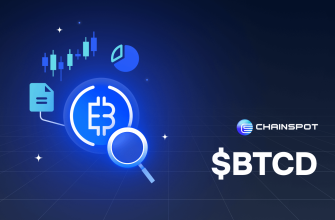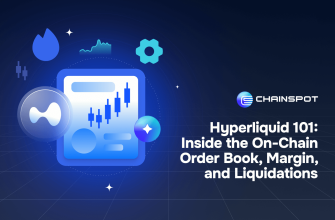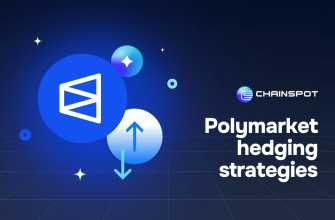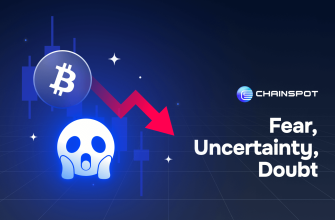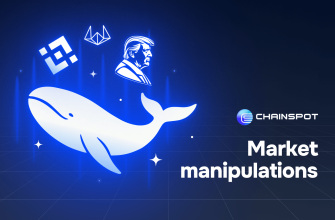The rise of Hyperliquid as the fastest-growing on-chain derivatives exchange has transformed what it means to be a “maker.” Unlike most CEXs and even most on-chain venues, Hyperliquid has built a microstructure specifically engineered for competitive quoting, deep liquidity, maker-driven flow, and incentive mechanisms that reward precision, not aggression. The result is a market where makers can thrive — if they understand how to quote, how to manage inventory, how to survive volatility, and how to extract rewards such as $HYPE points without falling into the classic trap of overtrading.
This article is a full-length, comprehensive playbook for makers who want to dominate Hyperliquid’s markets. It covers both fundamentals and advanced mechanics:
-
How Hyperliquid’s order book works
-
Why its matching engine rewards disciplined quoting
-
The real structure of maker rebates
-
How to accumulate $HYPE points without grinding yourself into fees
-
The math of staying delta-balanced
-
Volatility-regime-based quoting strategies
-
Spread compression, expansion, and maker warfare
-
How to operate like a professional market-maker — but on-chain
-
And importantly: how to NOT overtrade while still capturing yield
The final section includes CTAs to Hyperliquid (with your referral code) and to Chainspot for seamless deposits and cross-chain liquidity routing.
Let’s break down the entire maker game — end to end.
1. Understanding Hyperliquid’s Microstructure: What Makes It Unique
Before discussing strategies, we need to understand why Hyperliquid is so structurally different. Its microstructure blends elements from:
-
high-frequency CEX engines
-
DEX transparency
-
on-chain settlement
-
maker-priority matching
-
simplified fee structures
-
no AMM curves (pure orderbook)
-
ultra-low latency block execution
This creates a perfect battleground for makers: fast, clean, and unforgiving.
1.1. The Matching Engine Prioritizes Makers
Hyperliquid’s matching engine has extremely consistent behavior:
-
First in queue = first filled
-
High maker fill % due to deep taker flow
-
Fair matching (no hidden orders, no internalization)
-
Transparent priority — queue position matters as much as price
This mimics top-tier CEX environments without giving jumpers or predatory bots an unfair advantage.
1.2. Why This Matters for $HYPE Farmers
If your goal is to farm $HYPE, you need fills — but not too many fills.
The best farmers:
Overtrading kills makers more than bad prices do.
Hyperliquid’s engine makes it possible to earn points without velocity addiction.
But only if you understand the rules.
2. The Maker’s Core Problem: Balance Fills, Inventory, and Spread
Every maker faces the same eternal triangle:
-
Tighter spreads → more fills → more $HYPE, more inventory risk
-
Wider spreads → fewer fills → fewer $HYPE, safer positioning
-
Inventory hedging → protects PnL → reduces net yield
A good maker optimizes all three. A bad maker overtrades, chases fills, burns points, and ends up paying hedge fees that erase all PnL.
So the question becomes:
How do you earn maximum $HYPE with minimum trade velocity?
This playbook answers exactly that.
3. Understanding $HYPE: How Points Actually Work for Makers
(Hyperliquid’s mechanics evolve, but the principles remain the same.)
3.1. The $HYPE Incentive Model Rewards Liquidity, Not Spam
Unlike many DEXes where incentives go to the highest-volume trader, Hyperliquid’s system is:
-
anti-wash-trading
-
anti-volume farming
-
pro-maker liquidity
-
pro-tight quoting
-
pro-market depth
This fundamentally changes maker strategy:
Your goal is not to create volume.
Your goal is to create liquidity.
Liquidity ≠ volume.
Liquidity = consistently available quotes near mid-price.
$HYPE points weight:
Makers who quote smartly earn more than those who trade aggressively.
4. Quoting Theory: How to Set Bid/Ask Like a Professional Maker
Let’s start with core maker logic used by professional HFT firms — simplified for on-chain.
4.1. Step One: Identify The True Midprice
The midprice isn’t (best bid + best ask)/2.
The true mid is:
Last traded price ± microtrend adjustment ± volatility premium
In stable conditions, just use top-of-book mid.
In fast markets, widen slightly to avoid toxic taker flow.
4.2. Step Two: Choose Your Spread Width Based on Conditions
Your spread should widen when:
-
volatility rises
-
order book thins
-
large trades hit
-
correlation assets move
Your spread should tighten when:
4.3. Step Three: Avoid FIP (First In, Punished)
If you quote the tightest possible spread during high volatility, you get:
This is “First In, Punished.”
Professional makers avoid it by monitoring:
-
order book shape
-
volume delta
-
aggressive taker bursts
-
trend-following algos
Quote tight when stable.
Quote wide when toxic.
5. Inventory Risk: The Silent Killer of On-Chain Makers
Overtrading usually begins with poor inventory management.
5.1. Why Inventory Risk Matters More On-Chain
Unlike CEX-based market makers, on-chain makers have:
-
higher hedging friction
-
gas considerations (less so on Hyperliquid, but still relevant)
-
slower cross-chain balancing (Chainspot helps here)
-
more transparent books (predators see your position)
This makes inventory management the #1 skill for a Hyperliquid maker.
5.2. Delta-Neutrality Isn’t Optional
The best makers aim to stay:
For many makers, the optimal band is simply:
Stay within ±5% of your max inventory.
5.3. Hedging Strategy: Don’t Hedge Every Fill
Hedge too often?
You overtrade.
Hedge too rarely?
You carry toxic risk.
The ideal approach is:
Hedge inventory buckets, not individual trades.
Example:
If your bucket is 100 units, only hedge when you hit 100, 200, 300, etc.
6. Farming $HYPE Without Overtrading: The Anti-Churn Framework
This is the heart of the playbook.
Makers burn themselves by trading too much.
They should instead follow this:
6.1. The “Slow Fill, High Score” Principle
To earn $HYPE efficiently:
-
quote continuously
-
stay competitive but not hyper-tight
-
avoid toxic times
-
embrace mean-reverting spread behaviour
-
prioritize time-in-market, not trade count
You earn points by being present, not by being reckless.
6.2. Optimal Quote Frequency
Most makers update too often.
The winning cadence is:
Slow markets: quote every 2–4 seconds
Moderate volatility: quote every 1–2 seconds
High volatility: widen and quote every 3–8 seconds
Over-updating burns queue position.
6.3. Avoiding Wash-Trading Traps
Because $HYPE does not reward raw volume, wash-volume makers instantly lose.
To avoid wash-trading traps:
-
never cross the spread intentionally
-
never attempt taker-to-maker cycles
-
never widen intentionally just to get filled
-
never hedge multiple times per minute
You will lose more than you earn.
6.4. Spread Discipline: The $HYPE Sweet Spot
In most markets, the ideal spread is:
1.1–1.8 × the natural spread
Tight enough to win queues.
Wide enough to avoid toxic flow.
6.5. Farming Technique: “One-Sided Quoting”
If the market is trending upward:
-
tighten offers
-
widen bids
If trending downward:
-
tighten bids
-
widen offers
This reduces inventory risk significantly.
7. Volatility Regime Strategy: How to Quote in Any Market
Hyperliquid makers must adapt to three regimes:
7.1. Regime A: Low Volatility
This is peak $HYPE farming environment.
Characteristics:
-
tight books
-
low toxic flow
-
predictable rotations
Maker strategy:
-
tighten spreads
-
quote shallow size
-
aim for small buckets
-
maximize uptime
7.2. Regime B: Medium Volatility
This is where maker skill matters.
Maker strategy:
7.3. Regime C: High Volatility
This is where makers get destroyed.
Maker strategy:
-
widen spreads significantly
-
quote deep inventory
-
avoid the very top of book
-
hedge less frequently
-
never go top-of-queue at microtrend reversals
Your job in regime C:
Survive. Don’t farm.
8. Maker Warfare: Outplaying Other Makers
You’re not alone.
Every market has competing makers.
8.1. Queue Position Combat
Top tricks makers use:
Win by:
8.2. Spread Compression Battles
If another maker compresses spreads:
This is how you avoid FIP.
8.3. Spread Traps
Advanced makers intentionally set spreads too tight to bait rival makers into toxic fills.
Don’t get trapped.
9. Position Sizing Framework: How Much to Quote
If spreads determine risk, size determines severity.
9.1. Use Vol-Adjusted Sizing
Size ∝ 1/volatility
Lower volatility → larger size
Higher volatility → smaller size
9.2. Never Quote Your Entire Inventory
Always keep inventory buffer for:
-
hedging
-
trend absorption
-
liquidity shocks
10. The Maker’s Tech Stack: Automation, Monitoring, and Routing
Professional makers don’t manual-trade.
10.1. You Need Automation
Even a simple bot with:
-
fair-price calculation
-
spread algorithm
-
inventory guardrails
-
bucket hedging
-
volatility model
will outperform manual makers.
10.2. You Need Cross-Chain Liquidity Access
Using Chainspot makes hedging and funding easier:
-
bridge to fund positions
-
rotate collateral
-
rebalance assets
-
move stablecoins quickly
You can’t be a serious maker if you can’t rebalance efficiently.
11. Common Mistakes New Makers Make
11.1. Overtrading
The #1 killer.
11.2. Over-tightening spreads
Second killer.
11.3. Hedging too often
Death by fees.
11.4. Hedging too rarely
Death by drift.
11.5. Not recognizing toxic flow
Death by predatory takers.
11.6. Inventory bias
Death by trend.
12. A Complete Step-By-Step $HYPE Farming Strategy (Without Overtrading)
Here is a complete, professional-grade blueprint.
Step 1 — Define Your Inventory Buckets
Choose a system such as:
-
±5% or
-
100/200/300 unit buckets
Never hedge until a bucket boundary is hit.
Step 2 — Define Your Spread Rules
Use:
Step 3 — Quote Every 1–3 Seconds
Not every millisecond.
Not every second.
Avoid over-updating.
Step 4 — Avoid Volatility Spikes
Turn off quoting during:
-
liquidations
-
data releases
-
whale sweeps
-
correlated asset jumps
Step 5 — Farm in Low Vol Regimes
Most $HYPE will come from stability.
Step 6 — Hedge Only Buckets
Not individual trades.
Step 7 — Always Remain Quoting
Even wide quotes help your $HYPE score.
13. Conclusion: The Maker’s Edge on Hyperliquid
Hyperliquid isn’t just another derivatives DEX.
It’s the first on-chain environment where:
-
professional-grade making is viable,
-
rebates are meaningful,
-
$HYPE incentives reward discipline,
-
spreads are competitive,
-
latency and matching feel like CEX,
-
transparency keeps the game fair.
But the winners are not the highest-volume traders.
The winners are disciplined makers who quote consistently, hedge intelligently, manage inventory ruthlessly, and farm $HYPE without overtrading.
If you follow the playbook above, you’ll be ahead of 95% of market participants.
CALLS TO ACTION
👉 Trade on Hyperliquid with the Chainspot referral link:
https://app.hyperliquid.xyz/join/CHAINSPOT
👉 Use Chainspot to bridge liquidity rapidly:
https://app.chainspot.io
If you need a short social-media version, PDF-formatted version, or a full coding guide for a quoting bot, just tell me — I’ll generate it.






